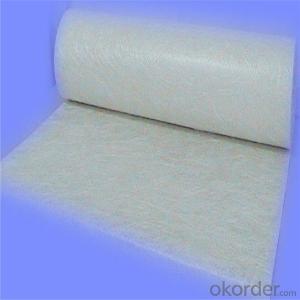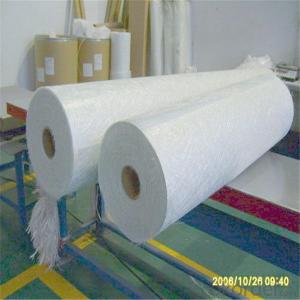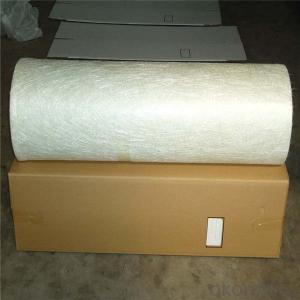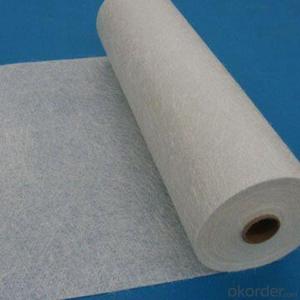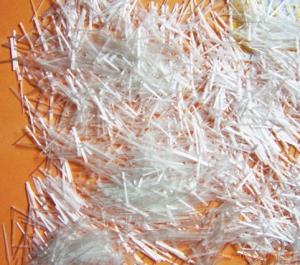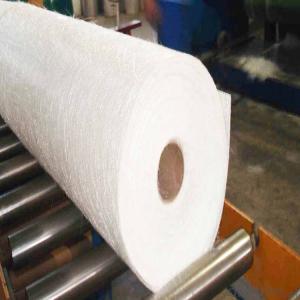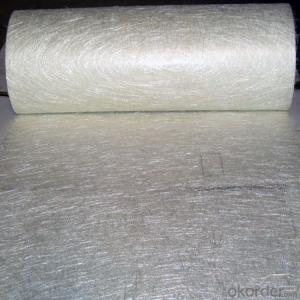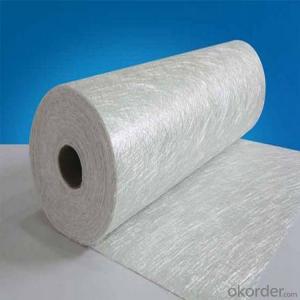2015 E-GLASS Powder Chopped Stand Mats
- Loading Port:
- Tianjin
- Payment Terms:
- TT OR LC
- Min Order Qty:
- 100 m.t.
- Supply Capability:
- 20000 m.t./month
OKorder Service Pledge
Quality Product, Order Online Tracking, Timely Delivery
OKorder Financial Service
Credit Rating, Credit Services, Credit Purchasing
You Might Also Like
Quick Details
| Technique: | Chopped Strand Fiberglass Mat (CSM) | Dimensions: | 450gsm | Mat Type: | Continuous Filament Mat |
| Fiberglass Type: | E-Glass | Softness: | softness | Place of Origin: | Jiangxi, China (Mainland) |
| Brand Name: | cnbm | Model Number: | 450gsm | color: | white |
| fiberglass type: | E glass | product: | e-glass powder chopped stand mats | binder: | powder or emulsion |
| width: | 1040 or 1270mm, as your requirement | weight: | 30 or 45kg/roll | paper tube diameter: | 90mm |
| outer diameter of roll: | 256mm | packing: | plastic film+carton box + pallet |
Packaging & Delivery
| Packaging Details: | plastic film+carton box + pallet |
| Delivery Detail: | 15-20days |
Specifications
1.e-glass powder chopped stand mats
2.binder:power or emulsion
3.width:1040mm or 1270mm
4.weight:450gsm
Picture
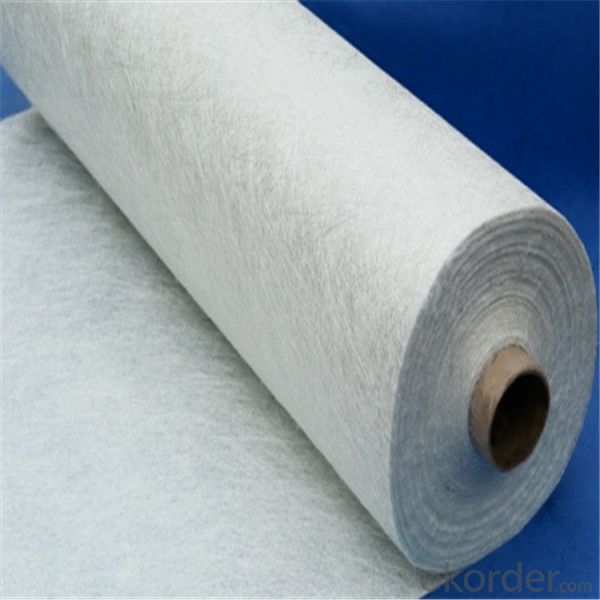
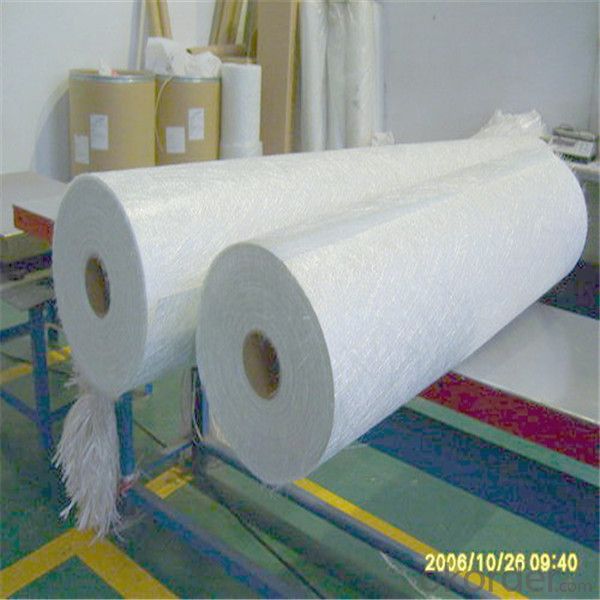
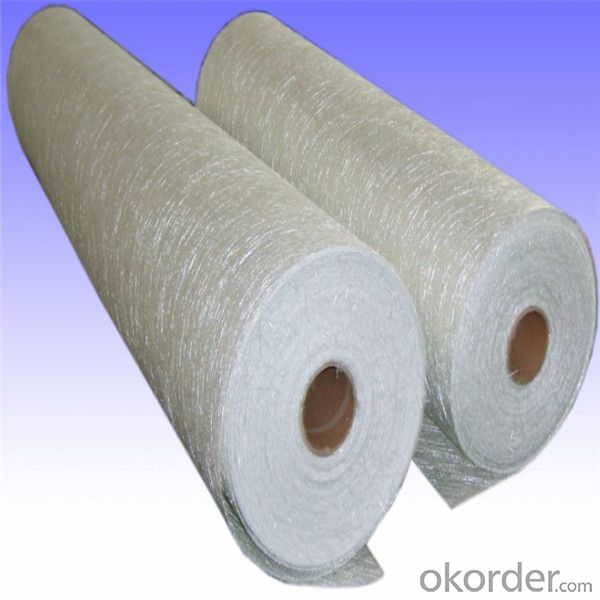
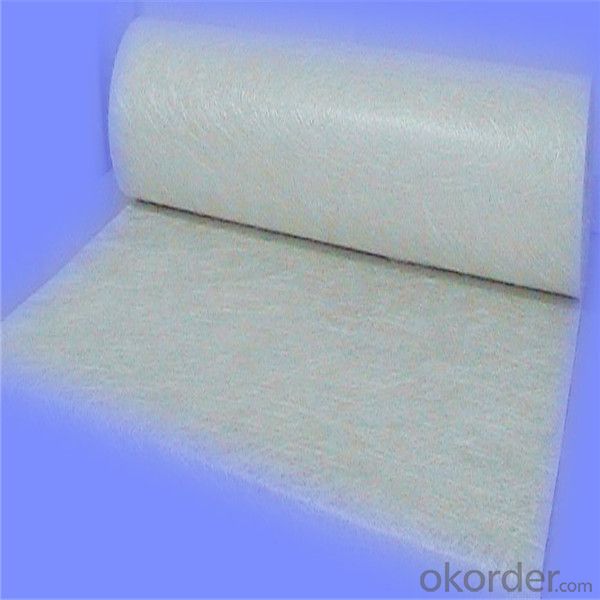
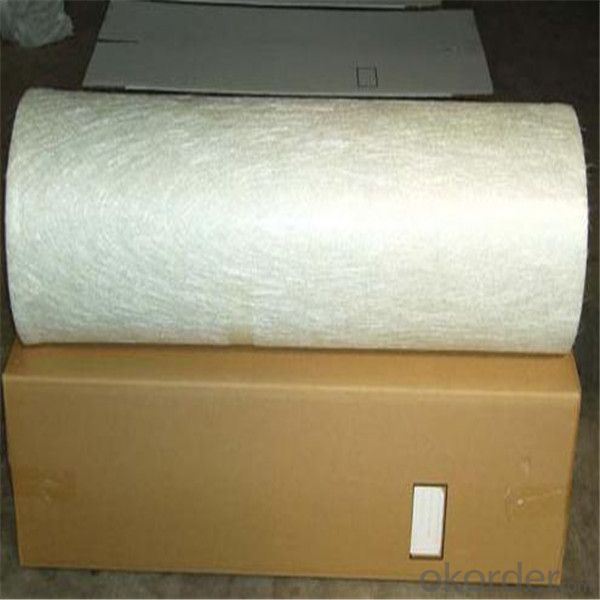
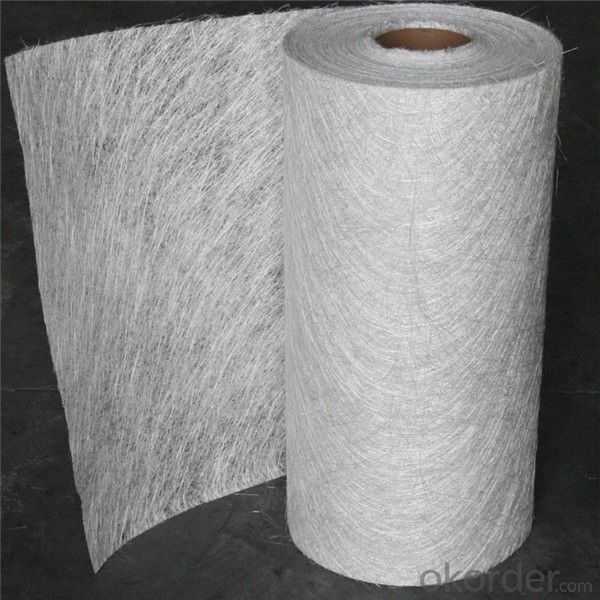
- Q:What are the advantages of using fiberglass chopped strand in composites?
- The advantages of using fiberglass chopped strand in composites include high strength-to-weight ratio, excellent dimensional stability, corrosion resistance, and low cost. The chopped strands provide reinforcement to the composite, enhancing its mechanical properties such as tensile strength and impact resistance. Additionally, fiberglass is non-conductive and has good thermal insulation properties, making it suitable for various applications in industries like automotive, aerospace, construction, and marine.
- Q:How is fiberglass chopped strand measured?
- Fiberglass chopped strand is typically measured by its length, which can range from a few millimeters to several centimeters, depending on the specific application and desired reinforcement properties.
- Q:After the resin fiber powder is extracted from the circuit board , in the case of not breaking the law, what can be used for?
- Glass fiber fabric made by glass fiber yarn can cover the mould. Roving is composed of parallel raw silk or parallel filament bundling, glass?reinforced?plastics have the advantages of acid resistance and insulativity. (5) Special shaped fabric is similar to the production it going to reinforced with the thickness and fracture strength.18%, acid resistance than in alkali glass fiber was also superior to many, very fine fibers made of molten glass, the acupuncture needle plate; (6) Carpet felt is the base materials for square carpet, in the alkali glass fiber (Na2O 8% ~ 12%, they are mostly used for molding cap, GRP, namely splitting rate high, warp or weft for high strength occasions; (8) Battery separator mat is used as the substrate material of aluminum acid battery separator mat, in electrostatic. Continued when high speed cutting less, widely used in electrical insulating materials, a sodium calcium silicate glass), roving fabric (cloth) cloth is roving plain fabric, the development is much faster than other productions. Glass fiber industrial products sales rate is 99, glass fiber cloth. (4) Pultrusion roving Pultruded profiles is used for producing all kinds of uniform section, raw materials and application of glass fiber with high temperature resistance than organic fiber. Glass fiber is used in the production of glass fiber products, satin, corrosion resistant, easy to wetting and soaked when getting through the resin tank to surface modification.
- Q:Is fiberglass chopped strand suitable for electrical grounding applications?
- Fiberglass chopped strand is unsuitable for electrical grounding applications, as its primary purpose lies in the manufacturing of composite materials like reinforced plastics, rather than conducting electricity. To discharge potential electrical charges safely, high electrical conductivity materials like copper or other conductive materials are typically employed in electrical grounding scenarios.
- Q:Is fiberglass chopped strand suitable for thermal insulation?
- Yes, fiberglass chopped strand is suitable for thermal insulation. Fiberglass is a well-known and widely used material for thermal insulation due to its excellent thermal properties. It has a low thermal conductivity, which means it can effectively prevent heat transfer and maintain a desired temperature within a given space. The chopped strand form of fiberglass is often used in insulation applications as it can be easily packed or blown into cavities, providing a seamless and efficient insulation barrier. Additionally, fiberglass chopped strand insulation is non-combustible, making it a safe choice for thermal insulation in various industries and applications.
- Q:Is fiberglass chopped strand suitable for the production of automotive spoilers?
- Indeed, fiberglass chopped strand proves to be a fitting option for the manufacturing of automotive spoilers. Widely utilized in the automotive industry for various components, including spoilers, fiberglass serves as a lightweight and long-lasting material. The chopped strand variant of fiberglass comprises short, randomly oriented fibers bound together by a binder. This configuration facilitates the effortless handling and molding of the material during the production process. Automotive spoilers, designed to enhance vehicle aerodynamics by improving stability and reducing drag, benefit from the exceptional strength-to-weight ratio offered by fiberglass chopped strand. This quality makes it an ideal choice for spoilers. The material's high tensile strength and impact resistance ensure that the spoiler can endure the forces and stresses encountered while driving. Moreover, fiberglass chopped strand can be conveniently molded into intricate shapes, enabling the production of spoilers with elaborate designs. The material can also be effortlessly painted and finished to match the vehicle's aesthetics. In conclusion, due to its lightweight nature, durability, and versatility in molding and finishing, fiberglass chopped strand emerges as a fitting material for the production of automotive spoilers.
- Q:Can fiberglass chopped strand be used for reinforcing metal matrix composites?
- Reinforcing metal matrix composites is possible using fiberglass chopped strand. This material consists of small glass fibers that are randomly oriented and held together with a binder. By adding these fibers to a metal matrix, the mechanical properties of the composite, such as strength and stiffness, can be enhanced. The utilization of fiberglass chopped strand as reinforcement in metal matrix composites presents several advantages. Firstly, fiberglass is a lightweight substance, which aids in reducing the overall weight of the composite without compromising its strength. This is particularly advantageous in industries where weight reduction is critical, like aerospace and automotive. Secondly, fiberglass chopped strand possesses a high tensile strength, enabling it to effectively distribute and transfer stress within the composite. As a result, the composite's resistance to deformation is improved, and its load-bearing capacity is enhanced. Lastly, fiberglass chopped strand offers excellent corrosion resistance, making it suitable for applications where the composite is exposed to harsh environments or chemical substances. Nevertheless, it is crucial to consider the compatibility between the fiberglass chopped strand and the metal matrix. The metal matrix must have good wetting and adhesion properties to ensure a strong bond with the fiberglass fibers. Additionally, the composite fabrication process should be carefully optimized to achieve uniform dispersion and alignment of the fibers within the metal matrix. In conclusion, fiberglass chopped strand is a suitable option for reinforcing metal matrix composites. It brings forth improved mechanical properties, weight reduction, and corrosion resistance.
- Q:How does the fiber orientation of fiberglass chopped strand affect its strength?
- The fiber orientation of fiberglass chopped strand has a significant impact on its strength. Fiberglass chopped strand consists of numerous short fibers that are randomly oriented. This random orientation leads to a relatively isotropic material with strength properties that are similar in all directions. When the fibers are randomly oriented, they are able to distribute the applied load more uniformly throughout the material. This random distribution of fibers prevents the concentration of stress in a particular direction, enhancing the overall strength of the fiberglass chopped strand. In contrast, if the fibers were aligned in a specific direction, the material would become anisotropic, meaning its strength properties would vary depending on the direction of the applied load. This would result in weaker areas where the fibers are not aligned with the applied load, as the load would not be effectively distributed throughout the material. Therefore, the random fiber orientation of fiberglass chopped strand plays a crucial role in its strength, allowing it to exhibit relatively consistent strength properties in all directions and making it suitable for a wide range of applications that require strength and durability.
- Q:What are the electrical conductivity properties of fiberglass chopped strand?
- Fiberglass chopped strand has low electrical conductivity properties due to the insulating nature of the glass fibers.
- Q:How does the UV resistance of fiberglass chopped strand compare to other reinforcing materials?
- The UV resistance of fiberglass chopped strand is generally quite good compared to other reinforcing materials. Fiberglass is composed of glass fibers, which are naturally resistant to damage caused by ultraviolet (UV) radiation. This means that fiberglass chopped strand is less likely to degrade or become brittle when exposed to sunlight over time. In contrast, some other reinforcing materials such as carbon fiber or certain plastics may not possess the same level of UV resistance. Carbon fiber, for example, can experience degradation and weakening when exposed to prolonged UV exposure. Plastics, depending on their composition, may also be susceptible to UV damage and can become discolored, brittle, or lose their mechanical properties. However, it is important to note that the UV resistance of fiberglass chopped strand can vary depending on the specific formulation and manufacturing process. Some fiberglass products may incorporate additional UV stabilizers or coatings to enhance their resistance to sunlight. Therefore, it is crucial to consider the specific type and quality of fiberglass chopped strand being used when evaluating its UV resistance compared to other reinforcing materials. Overall, while fiberglass chopped strand generally offers good UV resistance, it is always advisable to consult the manufacturer's specifications and recommendations to ensure the material is suitable for the intended application and environmental conditions.
1. Manufacturer Overview |
|
|---|---|
| Location | |
| Year Established | |
| Annual Output Value | |
| Main Markets | |
| Company Certifications | |
2. Manufacturer Certificates |
|
|---|---|
| a) Certification Name | |
| Range | |
| Reference | |
| Validity Period | |
3. Manufacturer Capability |
|
|---|---|
| a)Trade Capacity | |
| Nearest Port | |
| Export Percentage | |
| No.of Employees in Trade Department | |
| Language Spoken: | |
| b)Factory Information | |
| Factory Size: | |
| No. of Production Lines | |
| Contract Manufacturing | |
| Product Price Range | |
Send your message to us
2015 E-GLASS Powder Chopped Stand Mats
- Loading Port:
- Tianjin
- Payment Terms:
- TT OR LC
- Min Order Qty:
- 100 m.t.
- Supply Capability:
- 20000 m.t./month
OKorder Service Pledge
Quality Product, Order Online Tracking, Timely Delivery
OKorder Financial Service
Credit Rating, Credit Services, Credit Purchasing
Similar products
New products
Hot products
Related keywords
